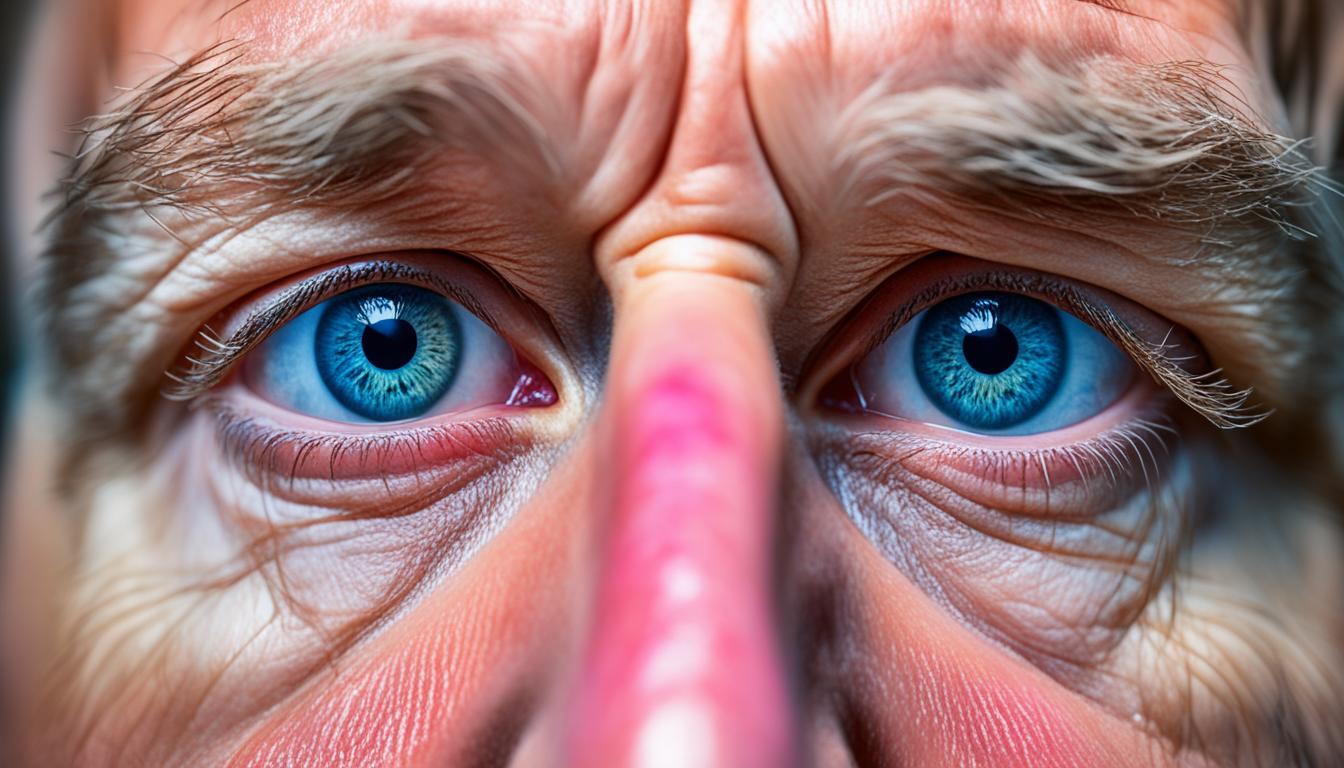Horner-Bernard syndrome affects half of the face and eye. On this side, you’ll see a drooping eyelid, a small pupil, and the skin won’t sweat. This condition happens when the nerve that controls these parts is damaged.
Things like strokes, tumors, and even injuries can cause this syndrome. To figure out if someone has it, doctors do a physical exam and more tests. It’s hard to treat directly, but fixing the root cause might help. Lately, doctors have started using stem cells to treat some cases.
Key Takeaways:
- Horner-Bernard syndrome, also known as Horner syndrome or Bernard syndrome, affects the face and eye on one side of the body.
- It is characterized by ptosis, miosis, and anhidrosis on the affected side of the face.
- The syndrome is caused by damage to the sympathetic nerve pathway from the brain to the head and neck.
- Potential causes of Horner-Bernard syndrome include strokes, tumors, spinal cord injuries, and neck trauma.
- Diagnosis involves physical examination, pharmacological testing, and imaging techniques.
- Addressing the underlying cause may help restore nerve function.
- Stem cell therapy is an innovative treatment option for certain cases of Horner-Bernard syndrome.
Signs and Symptoms of Horner-Bernard Syndrome
Horner-Bernard syndrome affects one side of the face. It shows in a drooping upper eyelid or ptosis. The eye’s pupil is smaller, called miosis. That side of the face doesn’t sweat properly. Also, the eyes can’t connect to the brain correctly, causing oculosympathetic palsy.
There might be a small difference with the lower eyelid too. It can look like it’s turned upwards. The eye might also look sunken. Kids under one might have different iris colors on the affected side.
Symptoms like ptosis (drooping eyelid) and anhidrosis (no sweating) can be hard to notice.
Recognizing the signs:
- Unilateral drooping of the upper eyelid (ptosis)
- Constricted pupil (miosis) on the affected side
- Lack of sweating (anhidrosis) on that side of the face
- Disruption of the sympathetic nerve pathway to the eyes (oculosympathetic palsy)
- Slight elevation of the lower eyelid (upside-down ptosis)
- Sunken appearance of the affected eye
- Difference in iris color in children under the age of 1
Doctors use these signs to spot and diagnose Horner-Bernard syndrome. This helps in treating and managing the condition.
Causes and Diagnosis of Horner-Bernard Syndrome
Horner-Bernard syndrome happens when the sympathetic nervous system is damaged. This system controls things like the size of your pupils, sweating, and your blood pressure. The cause of this syndrome can be different based on where the nerve damage is.
The syndrome can be caused by things like strokes, tumors, or neck injuries. For kids, it might come from birth issues or certain types of cancers. These problems stop the sympathetic nervous system from working right, causing the syndrome’s symptoms.
Figuring out if someone has Horner-Bernard syndrome needs a deep look from a doctor. They check the symptoms closely and might do tests with drugs to see how the system is working. They could also use MRI or ultrasound to pinpoint what’s wrong.
Once the cause of the syndrome is found, doctors can make a treatment plan. Fixing the main issue is key to getting the sympathetic nervous system back on track. This can help ease the symptoms people with Horner-Bernard syndrome face.

